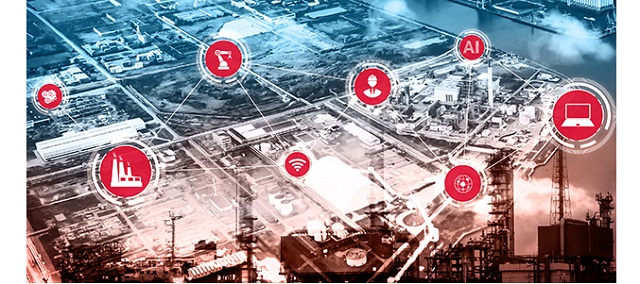Startup
Supply Chain Transformation: Mary Iazzetta’s Strategic Sourcing Disruption

Are you struggling to optimize your supply chain management? Do you find yourself constantly dealing with disruptions and inefficiencies? Look no further. This article will delve into the supply chain transformation journey of industry leader Mary Iazzetta and how her strategic sourcing disruption has revolutionized the game. Get ready to take your supply chain to the next level.
What Is Supply Chain Transformation?
Supply chain transformation refers to the strategic overhaul of a company’s supply chain processes to improve efficiency, cost-effectiveness, and customer satisfaction. This includes the adoption of advanced technologies, restructuring of logistics, and optimization of procurement practices.
Why Is Supply Chain Transformation Important?
The importance of supply chain transformation lies in its direct impact on operational efficiency, cost reduction, and customer satisfaction. Companies must adapt to dynamic market conditions, improve risk management, and enhance competitiveness. Furthermore, It promotes innovation, streamlines processes, and ensures sustainability, aligning businesses with current and future industry trends.
- Enhancing Efficiency and Agility: Supply chain transformation allows companies to streamline operations, reduce inefficiencies, and enhance agility. By optimizing processes, automating routine tasks, and leveraging data analytics, businesses can respond quickly to changing market demands and customer preferences. This agility is crucial for staying ahead of the competition and adapting to unforeseen disruptions.
- Managing Global Complexity: As businesses expand globally, supply chains become increasingly complex. It helps companies navigate this complexity by optimizing international logistics, managing cross-border regulations, and ensuring compliance. This allows organizations to tap into new markets efficiently while mitigating risks associated with global operations.
- Risk Mitigation: Supply chain disruptions, whether due to natural disasters, geopolitical events, or supplier issues, can have a devastating impact on a business. Transformation strategies often include risk mitigation measures, such as diversifying suppliers, creating backup logistics plans, and implementing robust business continuity strategies.
Who Is Mary Iazzetta, And What Is Her Role In Supply Chain Transformation?
Mary Iazzetta is a highly regarded figure in the field of supply chain transformation, recognized for her work in strategic sourcing. Her responsibilities include implementing innovative techniques to streamline procurement processes, enhance supplier relationships, and drive cost efficiencies. She prioritizes collaboration, sustainability, and digitalization to improve the resilience and performance of supply chains.
Refer to industry publications and professional profiles to learn more about Mary Iazzetta’s strategies and expertise.
What Were The Key Strategies Used By Mary Iazzetta?
Through innovative strategies, Mary Iazzetta revolutionized strategic sourcing practices in the supply chain industry. She prioritized supplier diversity, forming relationships with minority-owned businesses. She also implemented sustainable sourcing practices to reduce environmental impact. Furthermore, she utilized technology for process optimization, increasing efficiency.
Overall, her key strategies included:
- Diversity
- Sustainability
- Technology integration
How Did Mary Iazzetta Impact The Supply Chain Industry?
Mary Iazzetta significantly impacted the supply chain industry, revolutionizing strategic sourcing and improving supplier relationships, cost management, and operational efficiency. This disruption also sparked the adoption of advanced technologies and analytics to optimize supply chain processes, resulting in a shift within the industry.
What Are The Challenges Of Implementing Supply Chain Transformation?
Implementing supply chain transformation presents several challenges, such as employee resistance to change, difficulties integrating legacy technology, and the requirement for significant investment in new systems and processes. A survey conducted by Gartner revealed that 65% of companies view legacy systems and processes as the primary obstacle to achieving successful supply chain transformation.
- Resistance to Change: One of the most common challenges is resistance to change from employees at various organizational levels. Employees may be accustomed to existing processes and technologies, and they may resist the adoption of new systems and ways of working. Effective change management strategies are essential to address this challenge.
- Cost and Resource Constraints: It often requires substantial investments in technology, infrastructure, and talent. Organizations may face budget and resource limitations, making it challenging to fund and execute transformation initiatives effectively.
- Talent Shortages: It often requires a skilled workforce with data analytics, automation, and digital technologies expertise. Finding and retaining the right talent can be challenging, especially in competitive job markets.
- Regulatory Compliance: It may involve changes in regulatory compliance requirements. Maintaining evolving regulations and ensuring the supply chain remains compliant can be a complex and ongoing challenge.
How Can These Challenges Be Overcome?
- Define clear objectives: Identify specific targets and KPIs for overcoming these challenges during the transformation process.
- Invest in technology: Utilize advanced software and analytics to streamline operations and enhance visibility for overcoming these challenges.
- Collaborate with stakeholders: Involve suppliers, partners, and employees to ensure alignment and overcome these challenges.
- Educate and train: Provide comprehensive training programs to equip the workforce with the necessary skills to overcome these challenges.
- Continuous improvement: Implement feedback loops and regularly assess progress for ongoing enhancement and overcoming these challenges.
What Is The Future Of Supply Chain Transformation?
The future of supply chain transformation depends on advanced technologies such as AI, IoT, and blockchain. These technologies will streamline operations, optimize inventory management, and enhance transparency, increasing global supply chain efficiency, sustainability, and resilience.
What Are The Emerging Trends And Technologies Impacting Supply Chain Transformation?
Emerging trends and technologies impacting supply chain transformation include:
- Blockchain for transparent and secure transactions.
- Internet of Things (IoT) for real-time tracking.
- Artificial intelligence (AI) for predictive analytics.
- Sustainability initiatives for eco-friendly practices.
Robotics and automation streamline processes, while big data analytics optimize decision-making. By embracing these innovations, supply chain operations can see enhanced efficiency, reduced costs, and improved sustainability.
-

 Gadget4 weeks ago
Gadget4 weeks agoAfter Grand Success on BLDC Ceiling Fan, Eff4 Is Launching Smart Bulb
-

 Festivals & Events4 weeks ago
Festivals & Events4 weeks agoGoogle Celebrates Cherry Blossom Season with Animated Doodle
-

 Business2 weeks ago
Business2 weeks agoPrakash and Kamal Hinduja: Driving Social and Environmental Change
-
Education3 weeks ago
Fred DuVal: University Leadership as a Critical Resource for Climate Change Research and Life-Saving Solutions
-

 Health2 weeks ago
Health2 weeks agoThe Hinduja Brothers Commitment to Global Health: Empowering Communities Across Borders
-

 Cryptocurrency3 weeks ago
Cryptocurrency3 weeks agoDesigned For The Masses: How Akasha (AK1111) Is Unlocking Crypto For The Next Billion Users
-

 Cryptocurrency3 weeks ago
Cryptocurrency3 weeks agoNexaglobal & Future World Token (FWT): Could This Be the Next Big Crypto Investment of 2025?
-

 Sports4 weeks ago
Sports4 weeks agoWomen’s NCAA Tournament 2025 Sweet 16: Full Schedule, Fixtures, Teams, Bracket, and How to Watch March Madness Basketball Match Live


















